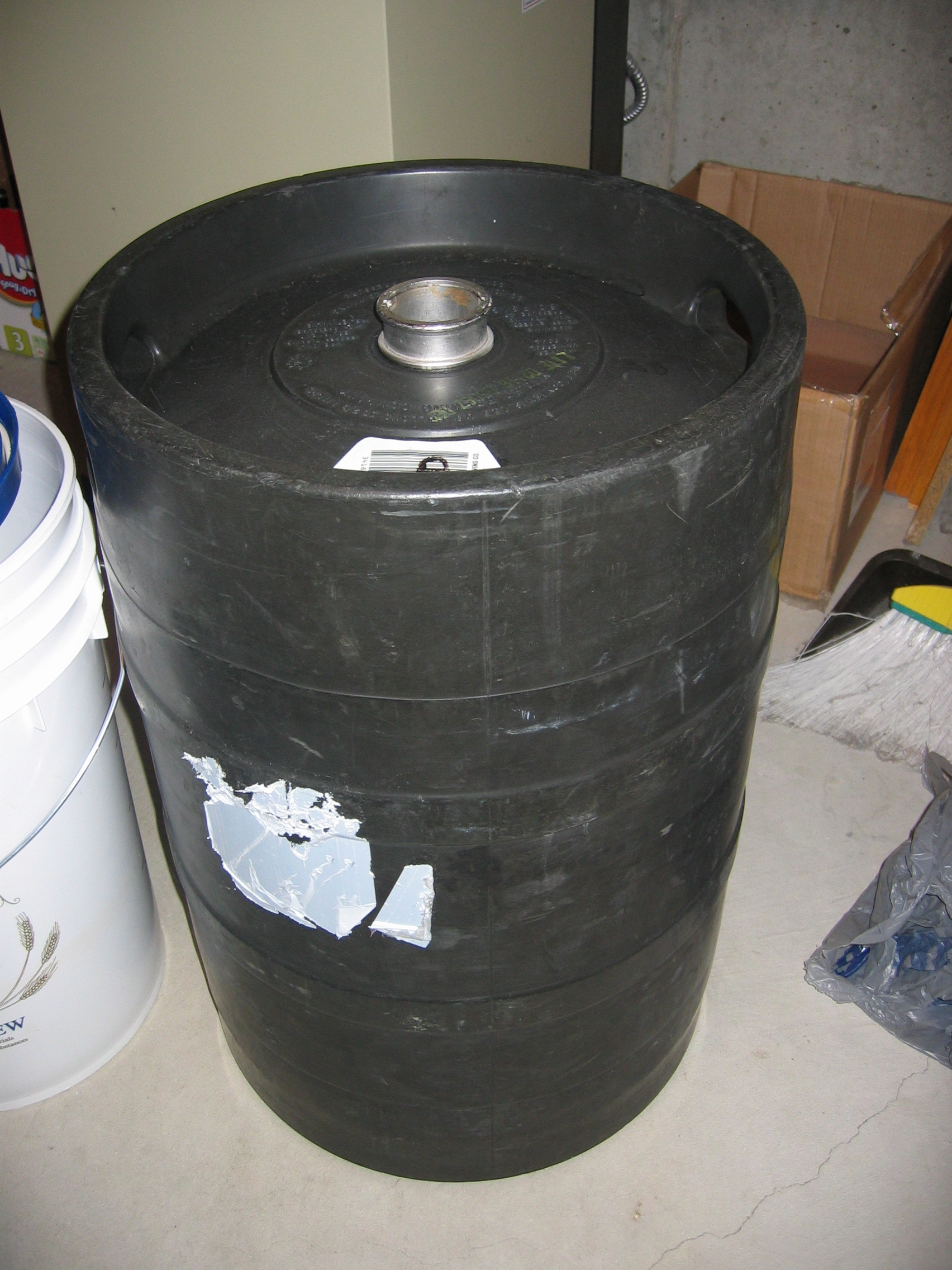xumbi
Well-Known Member
Greetings!
I have had this plastic (rubber?) covered keg in my possession for a few years:

A while back I removed the spear and used it to ferment 10 gallon batches, which worked fine, but I realized I'd rather use it as an electric HLT if possible.
Has anyone worked with a keg like this? How should I go about removing the plastic for the areas that will need cutting/drilling? Also, I don't have the equipment to do any cutting or drilling myself, how would I find someone locally who can?
Any suggestions on where I should order the parts from? This will be my first electric brewing endeavor... What heating element(s) should I buy since this won't be used for a full boil?
Thanks!
I have had this plastic (rubber?) covered keg in my possession for a few years:

A while back I removed the spear and used it to ferment 10 gallon batches, which worked fine, but I realized I'd rather use it as an electric HLT if possible.
Has anyone worked with a keg like this? How should I go about removing the plastic for the areas that will need cutting/drilling? Also, I don't have the equipment to do any cutting or drilling myself, how would I find someone locally who can?
Any suggestions on where I should order the parts from? This will be my first electric brewing endeavor... What heating element(s) should I buy since this won't be used for a full boil?
Thanks!





















![Craft A Brew - Safale S-04 Dry Yeast - Fermentis - English Ale Dry Yeast - For English and American Ales and Hard Apple Ciders - Ingredients for Home Brewing - Beer Making Supplies - [1 Pack]](https://m.media-amazon.com/images/I/41fVGNh6JfL._SL500_.jpg)






































